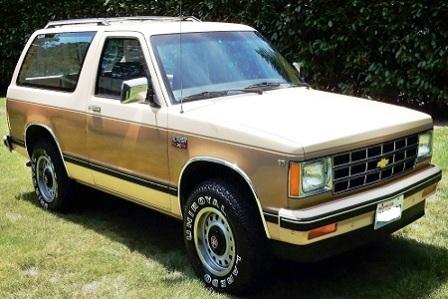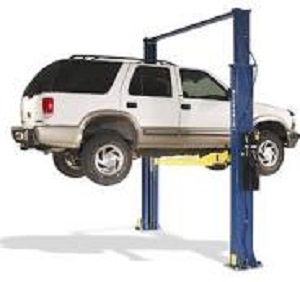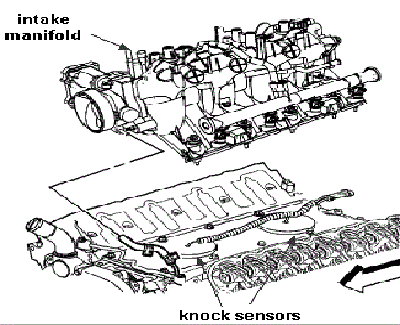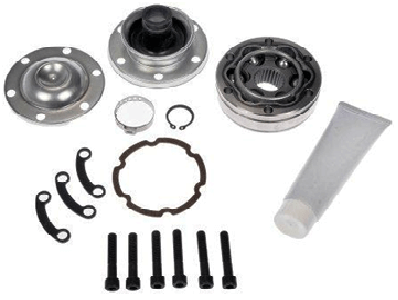
Proper planning for a car repair project can turn a possible disaster into a victory. Whether you just found out you set a code for a knock sensor or discovered an oil leak from the oil pan on your Chevrolet S10 Blazer make sure you prepare before you start the repair.
In this brief yet comprehensive article we’ll cover things to consider before beginning that driveway car repair project on a Saturday morning.
Not only will we discuss properly researching the repair procedure, but we cover a few items people don’t often consider. Preparation of the work area, having the proper tools and equipment plus knowing how long the job will take is just a few of the items we’ll uncover.
Complete Diagnosis of the Car Problem

All too often do-it-yourself mechanics jump into repairing something and then find out this isn’t the root cause of the complaint. Let’s use the oil pan leak on a Chevrolet Blazer as an example. Just because the engine oil pan is soaked with fluid doesn’t mean the pan gasket itself is leaking.
Rear main seal and timing cover leaks on S10 models powered by the 4.3 L Chevrolet V-6 remain a common issue. If you bought yourself an oil pan gasket set and started the repairs you won’t have what you need to fix the vehicle on hand. This is why properly planning for a car repair project becomes so important.
Sticking with this example, if the rear main seal is leaking on the Chevrolet engine, are you prepared to remove the transmission in your driveway? Because of the weight of the transmission and complexity of the procedure mechanics consider this a two-person job in the driveway. With that said, a rear main seal, timing cover and oil pan gasket replacement goes much quicker with the vehicle raised on a hoist.
Properly Researching the Auto Repair Procedure
 This is where I try to talk you into getting a vehicle specific repair manual for the automobile you’re about to work on. However, I’m also going to take this a step further and talk about researching solutions on the Internet before you begin the car repair project.
This is where I try to talk you into getting a vehicle specific repair manual for the automobile you’re about to work on. However, I’m also going to take this a step further and talk about researching solutions on the Internet before you begin the car repair project.
Again I’m going to use a specific example mentioned in the opening paragraph. Chevrolet Silverado pickup trucks with V-8 engines often set knock sensor check engine light codes.
These sensors are not visible when you pop the hood. So naturally you break out the factory auto repair manual to find a component location diagram. Now you see that these parts are mounted underneath the intake manifold. After reviewing the step-by-step guide for the removal and installation of the intake manifold a clear vision comes into focus of the complexity of the procedure.

With this knowledge you can visit dedicated Chevrolet forums and see how others have dealt with this automotive operation. Not only can you learn from people who’ve already done the repair you might discover some shortcuts.
I’ll take this a step further and ask you to stop by the YouTube video sharing site. Watch several clips of people dealing with these repairs. In this particular situation, when replacing a Chevrolet knock sensor, I see some people opt for relocating the sensor to the topside of the intake manifold.
Although I might not agree with this shortcut it will certainly stop the check engine light from coming on. Now with the input from the service manual combined with the real world experience of others, you’re ready to plan your car repair project.
Planning the Actual Car Repair Project
One of the most valuable pieces of information uncovered so far is how long these repairs will take us to complete in the driveway. Using the examples throughout this article, what we thought might take a few hours actually takes a full day or more.
 This means we start the project early on a Saturday morning and clear our schedule for the following day just in case something goes wrong. In addition to allotting the proper amount of time we also want to make sure the right tools for the job stand at the ready.
This means we start the project early on a Saturday morning and clear our schedule for the following day just in case something goes wrong. In addition to allotting the proper amount of time we also want to make sure the right tools for the job stand at the ready.
After reviewing the auto repair manual procedure for removing the engine oil pan on the Chevrolet V-6 engine we find it necessary to jack up the engine. Raising the motor provides clearance between the oil pan and the cross member.
We need to do this to slide the oil pan out. The tools required include a floor jack and several blocks of wood. Having these items on hand allows us to continue working without stopping to source this additional equipment.
Loading up with the Needed Supplies

In both of the examples in this article for replacing the knock sensors and the oil pan gasket we need supplies to perform an oil change when everything is finished. And the engine oil and filter isn’t the only supplies needed.
It’s a good idea to have a bag of oil dry on hand to take care of any spills or mess associated with these major repairs. We’ll need rags, razor blades and scrapers to clean the gasket surfaces. If we’re pulling off the engine intake we also need two gallons of premixed antifreeze.
The key to success when planning a car repair project is having everything you need on the job site. You’re more likely to find success if you can complete the assignment from start to finish. When you fail to properly plan for all of the possible contingencies you lengthen the repair time and reduce the chances of victory. Now go get yourself a vehicle specific PDF auto repair manual.
